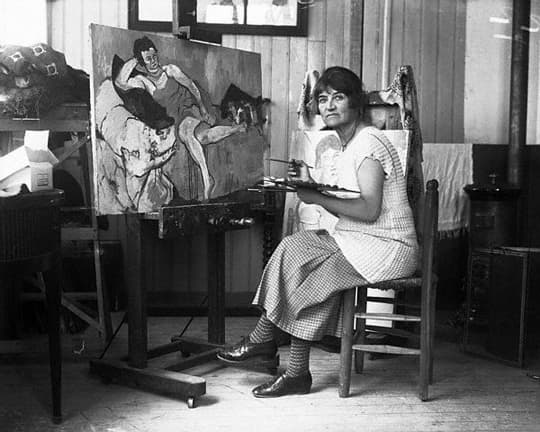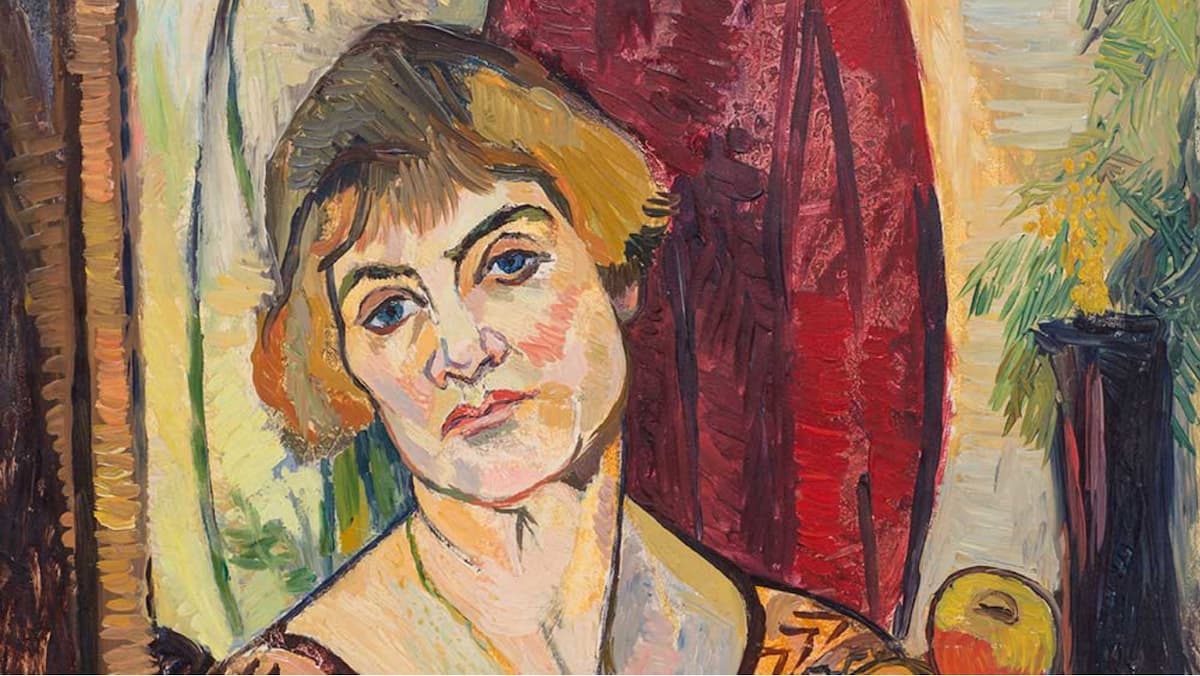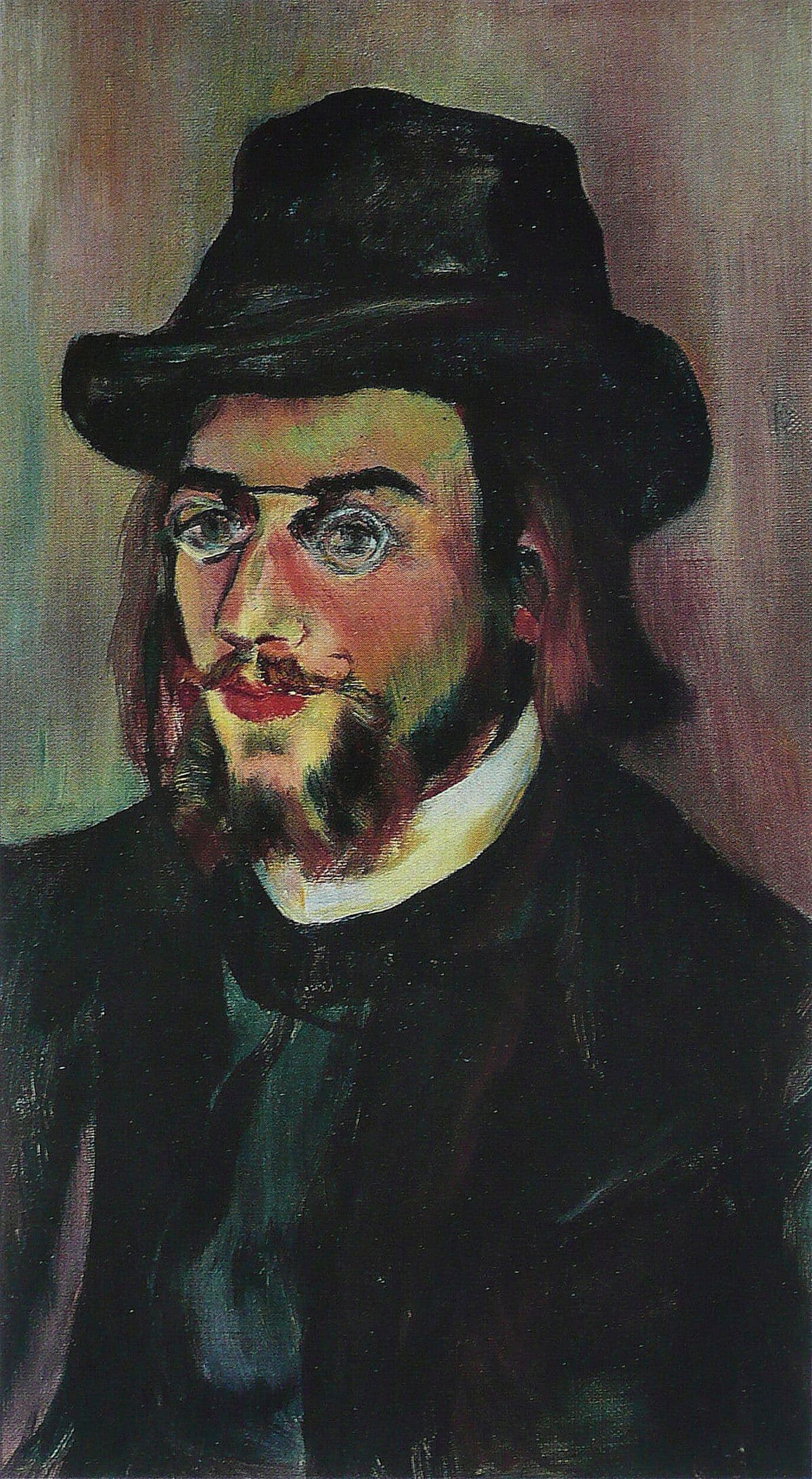She was composer Erik Satie’s one true love. But artist Suzanne Valadon was so much more than that.
Here are thirteen facts you may not know about Suzanne Valadon:

Suzanne Valadon, 1926
1. She was born Marie-Clémentine Valadon in Haute-Vienne, France, in 1865. Her alcoholic mother was a single parent who scraped by working as a cleaner. At eleven, Marie dropped out of school and began working odd jobs.
2. She joined the circus as an acrobat when she was fifteen. Just a year later, she fell while performing and was forced to retire. However, she had a great idea for her next job. Many artists had visited the circus, fascinated by the entertainment’s colors and movements, and she used those connections to get work as an artist’s model.
3. In 1883, she gave birth to a little boy named Maurice. She never confirmed his parentage. Rumor had it the boy was Renoir’s, but he denied it.
4. She became Toulouse-Lautrec’s lover in 1886. He nicknamed her Suzanne after the story of Susanna and the Elders, because she enjoyed modeling for older men. Their relationship lasted for two years.
Erik Satie: Musiques intimes et secretes (Klára Körmendi, piano)

Suzanne Valadon. Self-Portrait, 1927 (detail). Collection of the City of Sannois, Val d’Oise, France, on temporary loan to the Musée de Montmartre, Paris.
© 2021 Artist Rights Society (ARS), New York. Image by Stéphane Pons.
5. The earliest surviving art by Valadon that we have is a self-portrait in charcoal and pastel, drawn in 1883 when she was 18. Over the following years, although she never had any formal education, she carefully studied the work of the artists she modeled for and incorporated what she learned from them into her own work. One of her great mentors was Edgar Degas. She also appeared in paintings by Renoir and Morisot, among others.
6. In 1888 she became involved with wealthy financier Paul Mousis. He wanted to marry her. She turned him down, fearing the loss of her independence, but agreed to become his mistress.
7. During her relationship with Mousis, in January 1893, she met twentysomething composer Erik Satie, who was working as a pianist at a cabaret. He came to sit at her and Mousis’ table, and before the conversation was over, he had proposed to her. And so one of the most famous love triangles in music and art history began.
Erik Satie: 3 Morceaux en forme de poire (Anne Queffélec, piano; Catherine Collard, piano)

Suzanne Valadon’s portrait of Erik Satie
8. Satie often went out with both Valadon and Mousis. Satie held out hope that she’d eventually choose him because she clearly cared about him. She painted a famous portrait of him, and eventually, she slipped into a caretaker role, doing things like darning Satie’s socks and making him dinner. He fell very deeply in love with her.
9. Valadon proved to be a creative inspiration. It is believed that March 1893’s “Danses gothiques” were composed as an attempt at distraction from their turbulent relationship. In April of that year, he wrote a four-bar song for piano and voice with the lyrics “Bonjour Biqui, Bonjour!” (Biqui was the nickname he’d given to her.)
10. Mousis complained about this unconventional arrangement and left her, then came back. Then Satie complained – and Valadon moved with Mousis two doors down from Satie.
11. Her relationship with Satie was clearly never built on a solid foundation, and they broke up in 1893. Satie was beside himself with grief. A listener can hear some of his feelings in Vexations, a short piece commonly assumed to be for piano, although no instrumentation is specified, whose instructions seem to direct the player to play the piece 840 times. The first time it was played this way was in the 1960s.
Erik Satie: Vexations (Stephane Ginsburgh, piano)
12. Valadon stayed with Mousis for quite a few years. But her patience with a bourgeois lifestyle eventually ran out, and in 1909, when she was in her forties, she began an affair with her son’s friend, artist André Utter. They eventually married and remained together until 1934. As for Satie, he died in 1925, and as far as we know, he never fell in love again.
13. She said of her life and career: “I had great masters. I took the best of them, of their teachings, of their examples. I found myself, I made myself and I said what I had to say.”
For more of the best in classical music, sign up to our E-Newsletter





I’ve just met her. How amazing that she was a mother of a great artist and a lover of the legend Eric Satie who is one of my favorite composers. It’s impossible not to admire this woman.